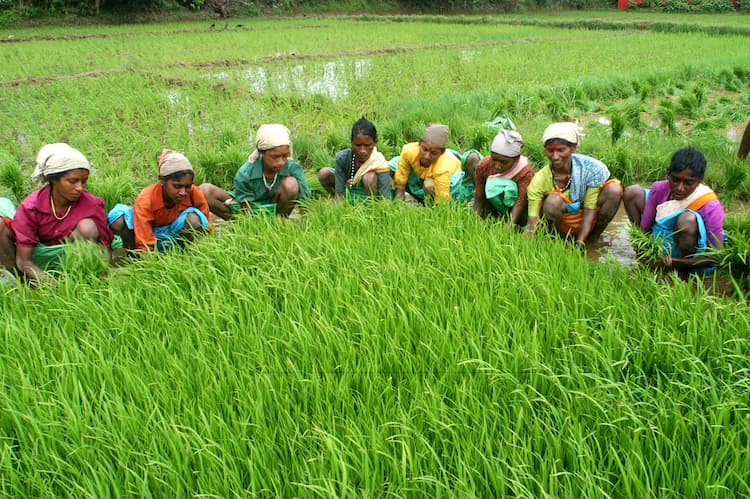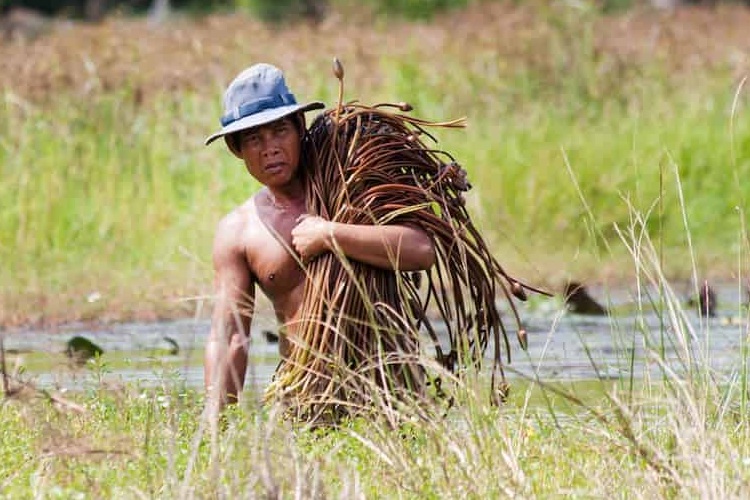Can Other Effective Area-based Conservation Measures (OECMs) foster people-led conservation in India?

Conservation of natural resources and processes is a complex and multidimensional task. It requires engaging with a diverse set of stakeholders and ensuring justice without compromising the conservation goals. Currently, India uses various Protected Area (PA) mechanisms under the Wildlife Protection Act, 1972, such as national parks, sanctuaries, conservation reserves, and community reserves to conserve nature. Some of these are aligned with the IUCN’s categorization of the PAs, and some are not. However, the PAs are not adequate to conserve nature and its components.

The Other Effective Area-based Conservation Measures (OECM) are a novel management approach to the ecosystems that acknowledge the roles and rights of diverse stakeholders in conserving the environment. The definition of OECM as adopted by the Conference of the Parties to the Convention on Biological Diversity in 2018 is: “Other effective area-based conservation measure” means “a geographically defined area other than a Protected Area, which is governed and managed in ways that achieve positive and sustained long-term outcomes for the in situ conservation of biodiversity, with associated ecosystem functions and services and where applicable, cultural, spiritual, socio–economic, and other locally relevant values”.
|
Aspect |
OECMs |
Protected Areas (PAs) |
|
Governance |
Can be managed by communities, private entities, or government. |
Typically managed by government agencies under strict legal frameworks. |
|
Inclusivity |
Recognizes and supports community-led and culturally significant conservation. |
Often excludes local communities from decision-making. |
|
Land Use |
Allows for multiple land uses (e.g.: livelihood, cultural use) that support conservation. |
Restricts most human activities to prioritize biodiversity. |
|
Traditional Knowledge |
Integrates Indigenous and local knowledge systems into conservation. |
Often overlooks traditional practices in favour of scientific management. |
|
Scalability |
Easier to scale across diverse landscapes, including private and community lands. |
Limited by legal and administrative processes. |
|
Contribution to Global Targets |
Helps meet 30x30 biodiversity targets by expanding conservation beyond formal PAs. |
Contributes but is limited by area and legal designation. |
OECMs: Significance and framework
India’s National Biodiversity Target 3, in line with Kunming-Montreal Global Biodiversity Framework, intends to conserve at least 30% of the areas by a combination of Protected Areas and OECMs. The utility of OECMs in India is contextually relevant as the land availability for Protected Areas is limited and the ecosystems are also diverse, which require tailored strategies for conservation that the PAs may not serve. For instance, the grassland, desert, and mangrove ecosystems may require a customized management framework for conserving the integrity of the biotic and abiotic resources associated with them. The funds with the Compensatory Afforestation Fund Management and Planning Authority (CAMPA) may also be utilized in OECMs when the land availability in PAs is meager, as sometimes the funds remain unspent.
The ‘Fortress Conservation’ model, which is a result of colonial hangover, has excluded the local and Indigenous folks from the conservation process and violated their human and customary rights across the globe. Therefore, it is widely recognized that the conservation models should be socially fair and ecologically sustainable. For instance, Orans in Rajasthan have been designated as ‘deemed forests’ to accord protection, which might result in people’s exclusion from the resources. Although we have provisions in the Scheduled Tribes and Other Traditional Forest Dwellers (Recognition of Forest Rights) Act, 2006 (FRA), to protect the rights of the Indigenous people, the record of the FRA has been bleak. Hence, it is imperative to expand the OECMs across the country and craft policies to strengthen the framework around them.

Integrated Policy Framework required
The OECMs in India are at a nascent stage and lack proper policies and legal frameworks to exploit their potential. Although there have been efforts to recognize OECMs in the country, a proper structural mechanism to actively manage the OECMs is still lacking. There are multiple agencies and procedures involved in the functioning of OECMs, which need to be streamlined. A comprehensive policy with standard operating procedures to recognize and regulate the OECMs with the clarity of roles and responsibilities of different governmental and non-governmental bodies could expedite the OECM model in India. We can take cues from global best practices as well. For instance, Canada has a Decision Support Tool (DST) for the stakeholders to evaluate and apply for the conservation efforts recognition. India may also constitute a process for the stakeholders to apply for the assessment of a site for designation as OECM, as that would help in streamlining the process and increase in local participation as well. Possibly, premises of several educational institutes, industrial establishments, etc., might come up under OECM, which might promote local participation and engagement in conservation. It might also open up avenues for entrepreneurial ventures that create value for the stakeholders.
International Union for Conservation of Nature (IUCN) recognizes four types of governance models for the OECMs, namely government-led, private-led, community-led, and mixed. Therefore, a national legal framework to manage these models could be purposeful. IUCN proposes three approaches to OECMs, namely primary, secondary, and ancillary, which make the objectives of OECMs flexible and contextual. In primary conservation, the area matches all the criteria of a Protected Area but is not recognized by the relevant government. The examples include areas managed by the Indigenous communities. In secondary conservation, the area is actively managed for some other specific purposes for which the conservation is a secondary goal. The examples include military establishments. In ancillary conservation, conservation is achieved, but is not the aim for management of the area. The examples include sacred groves. The advantage of OECM is that they are recognized on a case-by-case basis, which is also a challenge in terms of designing a standard framework to manage them. However, efforts need to be made to craft an integrated policy framework with flexibility and decentralization to avoid a one-size-fits-all approach and maintain regulatory oversight and standardization.

Policy Recommendations
The Monitoring and Evaluation (M&E) tools are crucial to regulate and assess the effectiveness of management and policies and enhance stakeholders’ engagement. India should create its own tools to monitor and evaluate the effectiveness of OECM management, inspired by Protected Area Management Effectiveness (PAME) frameworks and the IUCN Green List. Currently, India uses the Management Effectiveness and Evaluation (MEE) framework, in line with IUCN methodology, to assess National Parks, Sanctuaries, and Reserves, which could be modified to suit the context of the OECMs. Other factors related to OECMs must also be assessed by the monitoring tool, like the livelihood of locals, policies protecting traditional rights, traditional knowledge documentation, anthe d protection framework, etc. The effective monitoring and evaluation framework could help secure better finances for the OECMs as well, as impact investing or carbon market mechanisms could channelize the flow of funds into OECMs and ensure the triple bottom line of people, planet, and prosperity.
The laws around conservation in India have developed across the timelines of the contextual exigencies. It is an opportune time to align our legal frameworks with the international standards, such as those recommended by the IUCN, as that would help in standardized monitoring and reporting. Environmental laws in India are scattered around different legal codes that have been enacted during different periods that lead to a siloed approach in natural resource governance. Updating the legal framework and aligning it with the global best practices would help in synchronization with various stakeholders. Hitherto, most of the conservation activities in India have been led by the State. It is time to decentralize this process and incorporate other stakeholders into this while avoiding the red tape hurdles. OECMs seem promising in terms of complementing the protected areas for conservation and must be actively explored further for the same.

Discuss this article
Clicking links may earn us commission. . Stock images by Depositphotos.
Subscribe: Stories about wildlife, habitats and heroes
Welcome to Conservation Mag where we celebrate nature preservation through ecotourism and wildlife travel while we look for ways to preserve our heritage by supporting nature conservation. Starting conversations about the positive action people like you and I are taking to make a change.
Quick Links
Work With Us
![]()

